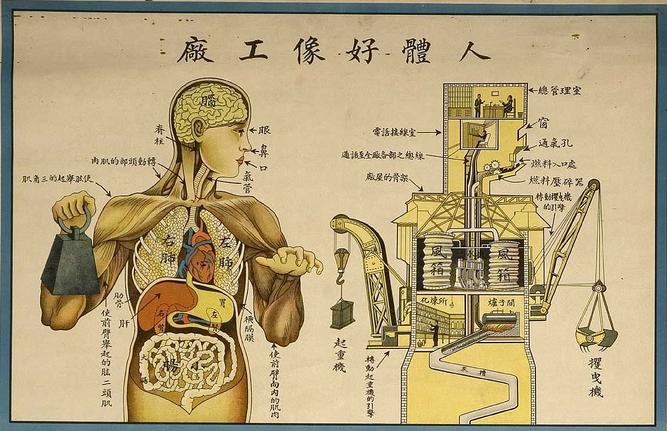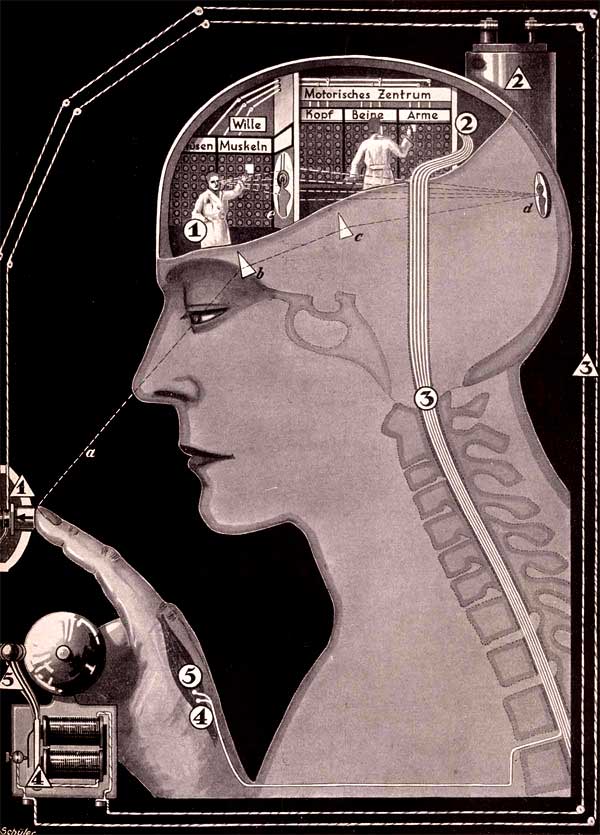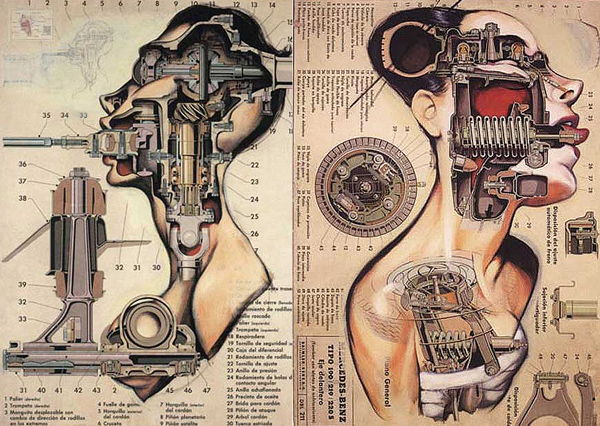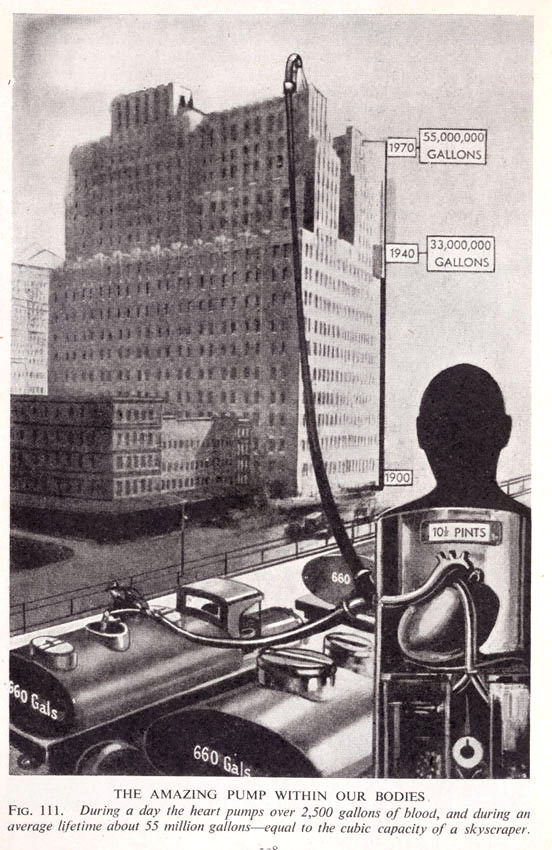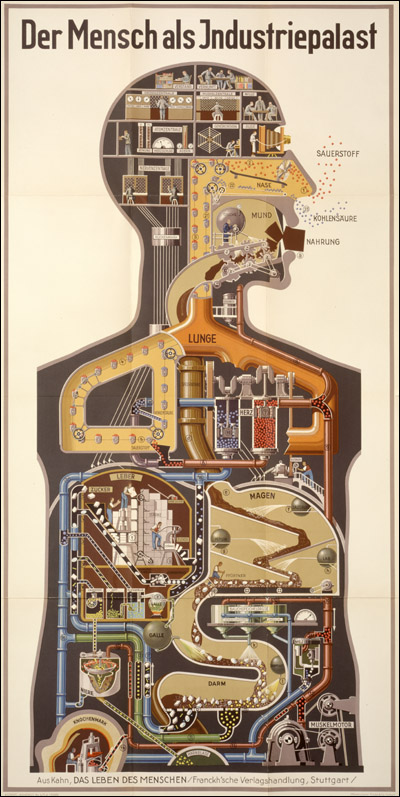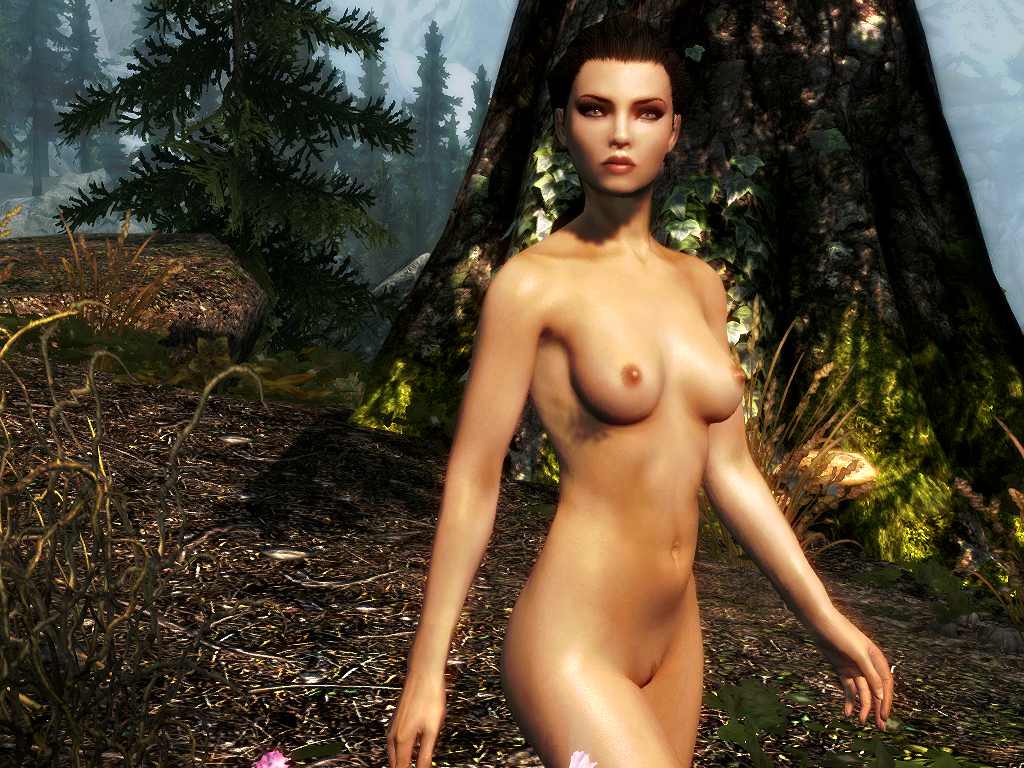The post The Articulations of a Body-Machine appeared first on &.
]]>I like to think of my body as a machine; not the hard-edged, overdetermined object that first comes to mind, but a flexible, plastic machine with moving, interchangeable parts that can be exchanged and linked together in multiple different ways. I like this image because it helps me to get over the illusion of having a distinct inside and outside, a me and not me.
Machines can be as simple as a lever and as complex as a satellite, they can be assembled, combined, and taken apart, they require maintenance, they degrade, they are energetic and transformative, they are designed to interact with other things, their borders are arbitrary, invented. From this point of view it becomes easier to reimagine everyday acts, like using my laptop, as an articulation of multiple machines, a combining of parts, with their own respective linkages and interdependencies. Through our interactions the laptop’s components and the relations between them become as much a part of my body as my fingers and veins. We share the same air, exchange heat, form feedback loops and circuits.
This text is a part of these circuits, which can be expanded to include the wooden furniture supporting our weight, the light coming in through the window, my rumbling belly, the computer’s AC adapter, the power bar, the outlet, the walls, the power lines outside my apartment, the pavement, the people who poured and patched the pavement, the people who maintain the power lines, the people who sold me the AC adapter, and beyond them, the people who mined, and soldered, assembled, and transported this laptop and its many components, which are now a part of my body and its movements, an extension of my eyes, my ears, my hands, my mouth.
This approaches what Jennifer Slack and J. Macgregor Wise call the perspective of articulation and assemblage, a perspective that sees all things as interconnected, dynamic, and contingent, a perspective that goes far beyond the temporary touching of skin and buttons, sensors and light, far beyond the confines of the apartment, and what is immediately tangible, visible, or audible.
I’m reminded of Stuart Hall’s assertion that, “The silent majorities do think; if they do not speak, it may be because we have taken their speech away from them, deprived them of the means of enunciation” (Grossberg 52).
There’s another reason I’m attracted to the idea of the flexible, moddable machine. For all its motion and dynamism, it still suggests constraint. Flexibility does not equal free reign. I can touch my fingers to the floor, but try as I might, I can’t touch my left hand to my left elbow, at least not without breaking a few bones. It’s not just physical limitations that we have to contend with, but also affective responses, such as anxiety, or disgust, and social stigmas, norms, codes, responsibilities, and regimes. For all my privilege, I am still limited in what I can do, where I can go, what I can say, limited by fear if nothing else. So the question becomes, what do I do within these constraints, how do I trace the shape of these discursive and material formations in order to push at their borders? How do I account for the fact that these formations have provided me with access to a computer, electricity, shelter, literacy, and other “means of enunciation,” at the expense of “the masses,” the silent majorities? It’s one thing to think of us all as interconnected body-machines, it’s another to imagine that these bodies are all equally positioned in relation to one another. As Slack and Wise point out, “agency is not distributed equally throughout networks” (123). Using a computer may be an everyday act for me, but it is far from everyone’s everyday.
I start with the idea of the body-machine because it allows me to trace a path, through various networks, from my current position (which shifts and multiplies along the way) to the multitude of agents that both allow me to access my objects of study, and condition my relation to them. Whatever I manage to make of those objects, it is always a result of our respective positions within a network, and the mediation of the agents and structures that make it up. Actor-Network Theory isn’t just a way of thinking about objects, but a way of thinking about ourselves thinking about, reading about, and representing objects. If the theory is aimed at discovering “how such networks get built, how they are maintained and transformed, how the articulations are made and unmade,” (Slack and Wise 121) then it seems important to acknowledge our own networked and network-building bodies as participants in those constructions and transformations.
The impulse is similar to Bruno Latour’s effort to highlight the process of discussing and institutionalizing what we typically think of as facts and values, though I take a more personal approach. This is more than just a matter of delineating research methods, and it requires more than a quick nod to subjectivity, it demands that we understand, as best we can, our own place in the constellations we are attempting to map out, and how that affects the process of mapping.
I start with my body and its articulations, rather than my intended objects of study, because it encourages me to consider how I arrived at those objects in the first place, without imagining that I am some sort of transcendental “mind” with unlimited mobility and agency. It forces me to think through my troubled relationship to Skyrim mods[1] like “Calientes Female Body Mod Big Bottom Edition” (CBBE), and “DIMONIZED UNP female body,” a relationship built both on privilege and marginalization.
Each encounter with these mods provokes a flood of associations, including plastic surgery, the fashion and cosmetic industries, reality television shows, sites plastered in pornographic ads, Barbie dolls, weight loss programs, and the many other practices, objects, discourses, and institutions that mark my body as a female body. It’s impossible for me to ignore the gendered content of these mods, even as I try to focus on the formation and circulation of the form, and broader questions surrounding neocolonialism, prosumerism and hyperconsumerism, culture jamming and the digital divide–questions which also implicate me in a sometimes-uncomfortable fashion.
This discomfort is useful, I think, as it leads me to ask, what are the rules that govern my body-machine, the rules that enable my speech, and the speech of others? What are their political implications (who or what is being suppressed, at what cost, and to whose advantage?), and how can we change them, if, indeed, we can?
Works Cited
Latour, Bruno. “A New Separation of Powers.” Politics of Nature: How to Bring the Sciences into Democracy. Cambridge: Harvard University Press, 2004. 91-127. Print.Grossberg, Lawrence. “On Postmodernism and Articulation: An Interview with Stuart Hall.” Journal of Communication Inquiry 10 (1986): 45-60.
Slack, Jennifer Daryl and J. Macgregor Wise. “Causality,” “Agency,” “Articulation and Assemblage.” Culture + Technology: A Primer. New York: Peter Lang, 2005. 33-101. Print.
[1] The Elder Scrolls V: Skyrim is a fantasy-themed action role-playing game developed by Bethesda and released in 2011. In the game players control a customizable player character (PC), which they use to interact with the environment and other non-player characters (NPCs). Some of the main activities in the game include fighting, talking, sneaking, stealing, exploring, crafting items, avoiding traps, and solving puzzles. As players engage in different activities, the player character gains experience and becomes more powerful (a process known as leveling up). The game is considered “open-world,” meaning players can travel almost anywhere in the world at any time, and are not required to follow a particular storyline or string of events. Skyrim mods are modifications of the game, typically made using the Skyrim Creation Kit software, which was released by Bethesda a few months after the game’s release. Anyone with a copy of Skyrim can download the Creation Kit software, which can then be used to change or add new content to the game. In order to access the software players must sign an End User License Agreement (EULA), which forbids modders from making money directly from their mods.
The post The Articulations of a Body-Machine appeared first on &.
]]>The post Text to Image appeared first on &.
]]>This is an image of the text you’re about to read:
HexASCII: On Learning to Code
You want to write a program that transforms digital text into image. It’s a problem of translation, of re-visualization. You ask a friend for help. He provides you with a map.
This is the map:
1. open txt file
2. open file that I create
(use tga file format, header + raw data, can use gimp to convert)
3. write tga header to file I created
4. for every char in txt file write that char after the header
5. close files
On a raft of language, pulled by strange currents, you encounter swarms of code, slippery as fish, blooming on the surface of a sea of images and text. The problem is somewhere below you, an oily shadow. You don’t even know what you’re hunting for, not really, and it’s easy to lose your bearings when the whole world seems to shift under your weight. It’s a matter of focus: a tuning of the eyeballs, a flickering of the ears. Like radio stations, recognizable sounds fade in and out of static. Each channel, each layer of abstraction, is like a pane of glass, more or less transparent, more or less cloudy, more or less warped. Each time you manage to break through a pane, you experience a heady rush of oxygen, a flush which leaves you giggling and wheeling, as if you’ve just stepped off a merry-go-round. You feel five years old again, triumphant, emboldened…until you run, face first, into another pane of glass.
Half of you is hunting and half of you is simply being swept away, pulled along by the swarm, by your rumbling belly, by the hands of your friend. You’ve been setting fires along the way. You’ll have to come back for those later. You’ve also been building, and breaking, and re-building. Gates and funnels and tiny machines of sapphire, bubblegum, and tar, that fetch and split and tear and mend and engulf whole strings of commas and bytes.
It’s with these little machines, these hooks and lines, that you finally catch your problem, your enigma:
using UnityEngine;
using System.Collections;
using System;
using System.IO;
namespace FileIOApplication
{
class TargaConverter
{
public static void DoIt()
{
{
BinaryWriter bw;
BinaryReader br;
FileInfo info;
//get text file length
info = new FileInfo(“/Users/carolyn/Documents/HUMA888/text_to_image.txt”);
double size = info.Length;
short width = (short)Math.Round(Math.Sqrt(size/3),0);
short height = width;
//create the file
try
{
bw = new BinaryWriter(new FileStream(“/Users/carolyn/Documents/HUMA888/image_from_text.tga”,
FileMode.Create));
}
catch (IOException e)
{
Console.WriteLine(e.Message + “\n Cannot create file.”);
return;
}
//writing into the file
try
{
byte[] buffer = {
(byte)0,
(byte)0,
(byte)2,
(byte)0,
(byte)0,
(byte)0,
(byte)0,
(byte)0,
(byte)0,
(byte)0,
(byte)0,
(byte)0,
(byte)(width & 0x00FF),
(byte)((width & 0xFF00) / 256),
(byte)(height & 0x00FF),
(byte)((height & 0xFF00) / 256),
(byte)24,
(byte)0
} ;
bw.Write(buffer);
}
catch (IOException e)
{
Console.WriteLine(e.Message + “\n Cannot write to file.”);
return;
}
//reading from the file
try
{
br = new BinaryReader(new FileStream(“/Users/carolyn/Documents/HUMA888/text_to_image.txt”,
FileMode.Open));
}
catch (IOException e)
{
Console.WriteLine(e.Message + “\n Cannot open file.”);
return;
}
try
{
while(true)
{
bw.Write(br.ReadByte());
}
}
catch (EndOfStreamException e)
{
Console.WriteLine(e.Message + “\n Reached end of file.”);
return;
}
catch (IOException e)
{
Console.WriteLine(e.Message + “\n Error”);
}
br.Close();
bw.Close();
}
}
}
}
public class TexttoImage : MonoBehaviour {
// Use this for initialization
void Start () {
FileIOApplication.TargaConverter.DoIt();
}
// Update is called once per frame
void Update () {
}
}

It’s with these that you crystallize its form, pry open its jaws, and peel back its skin. And while you’re eager to plunge your fingers into its slick, silvery body, to pluck out each organ like a green grape, and unravel its veins, you’re also afraid. The interior is bigger than it first appeared. The chambers are multiple, cavernous, and filled with echoes, and you are suddenly aware of just how little you know. What will you create with this shell of an enigma? A house of mirrors? A carpet of noise? A mosaic? What you want is explosives, an open wound, a photograph that makes it all worthwhile. No more plastic, no more smug remarks hanging from the ceiling like chintzy chandeliers, no more hollow words soaked in alcohol and wrapped in leaves of smoke, no more pretentious bullshit overflowing porcelain bowls, no more howling girls and deaf ears (especially that), no more humans, no more objects, only process, only change.
For a moment you place the enigma over your head, like a mask, and try to explain.
All things are in motion. Stasis is an illusion concocted by humans who feel sick to their stomach when they try to imagine otherwise; ideology is the vomit. We are swimming in our own vomit. We think we prefer simple lies to complex truth when in reality, we swap simple truth for complex lies that rattle with contradictions. Of course preference has nothing to do with it; agency and reality are convenient fictions, tools in the hands of the powerful and the influential. Tools to brand us as heroes or criminals, tools to funnel us into our respective institutions, tools to carve “you are free” on the insides of our skulls. What is freedom really? Freedom to crawl out of the mire, freedom to stop saying yes sir, no sir, freedom to play, freedom to work as we will for what we will, freedom to overthrow.
All this with a little program, you say? All this with a simple problem of translation, of re-visualization, of indexical relations? Of course not. This is nothing but a fragment, a small chunk of plaster torn from the wall. But even this is beginning to expose the wire-laced ribs of the rules and devices in which we’ve placed so much of our trust.
What happens when we take a familiar face, and turn it inside out? The point isn’t to see an inverted face, the point is to find out what makes it tick, who made it, and why. The point is to see everything as arbitrary, artificial, constructed. The point is to tear it down and remake it in our own image. Fuck Mount Rushmore, fuck Steve Jobs, fuck Microsoft and its proprietary software. We are a direct threat to all of that, but it’s only when we pick up the tools, only when we turn privilege against itself and peel back the skin, only when we learn to dig our fingernails into the oil-drenched belly of the beast, only then do we feel, in a cold sweat, the flesh, blood, and bone beneath this shining world of circuitry and digits.
Learning to code is no more revolutionary than learning to read and write.
Learning to code is no less revolutionary than learning to read and write.
The post Text to Image appeared first on &.
]]>